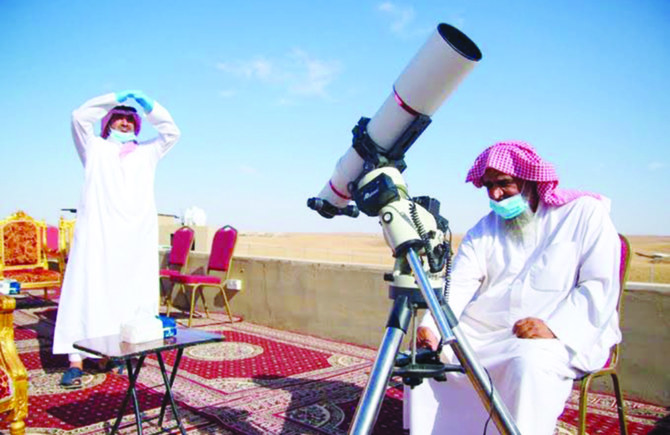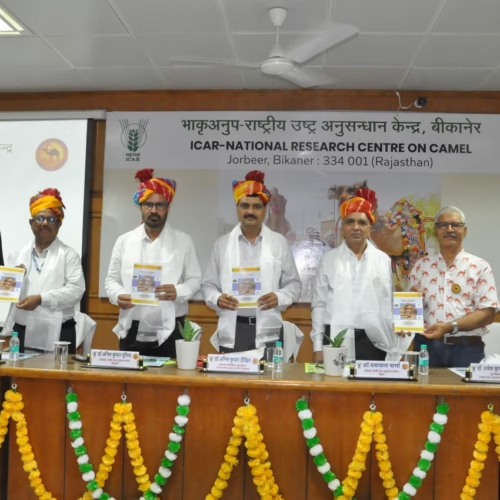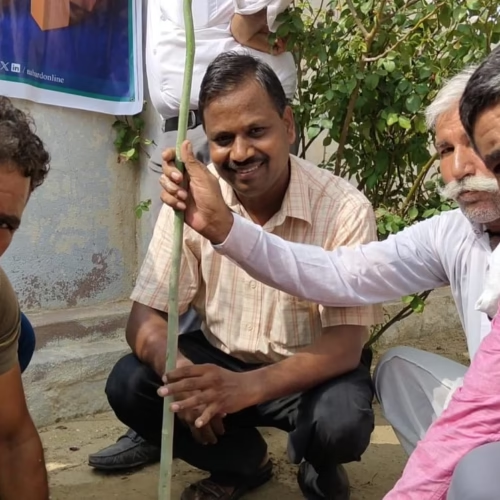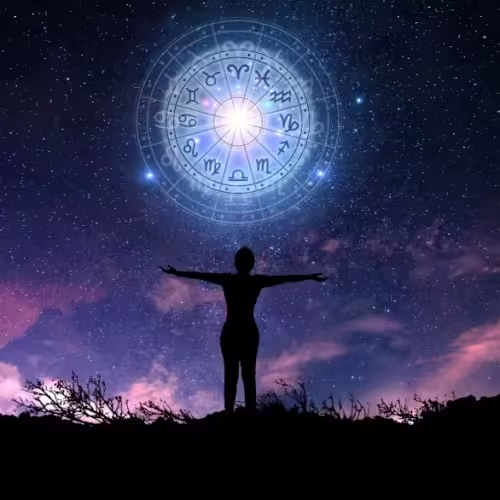
JEDDAH: More than a billion Muslims around the world are preparing to welcome the month of Ramadan, which will begin the day after the sighting of Ramadan’s crescent moon.
Each month a new moon indicates the beginning of the lunar cycle, and traditionally the start of the holy month is determined by the lunar calendar.
Muslims use the Islamic Hijri calendar to mark the beginning of different occasions such as Ramadan, Eid Al-Fitr, Eid Al-Adha and the Hajj season.
The calendar is determined by the cycle of the moon and consists of 12 months that follow a 29 or 30-day cycle.
According to NASA, the moon takes about 27.3 days to orbit the Earth to complete a revolution, but it takes 29.5 days to change to a new moon again.
Astronomers will soon be scanning the sky to look for the absence or presence of the crescent moon, which indicates the continuation of Shaaban, the month preceding Ramadan or the beginning of Ramadan, the ninth month in the Islamic Hijri calendar.
In Saudi Arabia, the Supreme Court usually announces the start of Ramadan month to the public, after the sighting of the crescent moon is confirmed by an observation from a team of astronomers.
Speaking to The Internal News, astronomer Mohammed Al-Taqfi explained that the signs that indicate the entry of the first day of Ramadan are through astronomical calculations of the houses of the moon.
“Following the houses of the moon mathematically is through a capable observer who can determine the entry of the beginning of the month and determine precisely the timing of the sunset, because he knows the 28 houses of the moon, and follows it every month throughout the lunar or the Hijri year,” Al-Taqfi said.
Throughout history, the sighting of the Ramadan crescent moon was achieved via the naked eye. Today, it could be achieved using telescopes, binoculars and modern astronomy, as well as the naked eye.
“In the past, the sighting of the crescent depended on the naked eye of people with sharp vision and taking the testimony of two trusted witnesses, which would be legally recorded. This is set in a report prepared by a committee of each country’s court, after which the announcement is circulated that the month of Ramadan has entered that country.”
“Nowadays, sighting the crescent moon is done either by the naked eye if possible, or by using modern technologies such as telescopes or binoculars, which the use of it was allowed by the jurisprudence to confirm the sighting of the crescent after having relied on the naked eye, and it is then also announced by a committee of each country,” Al-Taqfi said.
The sighting of the Ramadan crescent could face multiple astronomical or weather conditions that could hinder its visibility.
“If the moon sets before the sun during the appendix stage, or if the crescent sets within the twilight during the investigation time, or if the crescent sets in less than a minute or two at the time of the investigation . . . then these difficulties could hinder the visibility to see the crescent,” Al-Taqfi said.
Dust covering the sunset, increased humidity and cloud density are among other factors that could limit the sighting of the crescent, he said.
If the sighting is confirmed, then the new month begins, which dictates the start of the holy month, but in the case of failing to witness the crescent on the 29th of Shaaban due to any of the conditions, Ramadan will not start until after the 30th day of Shaaban.
“If these factors take place, which hinders the visibility to observe the Ramadan crescent, then the sighting of the crescent moon is confirmed by completing the 30-day cycle,” Al-Taqfi said.
Most countries follow Saudi Arabia’s moon sighting for a unified Ramadan and Eid Al-Fitr.
Meanwhile, the traditional moon-sighting methodology that is followed to determine the start of Ramadan can lead to different countries declaring the start of Ramadan a day or two apart.
“Countries worldwide differ in their timing based on the position of each country on the Earth’s longitude. And therefore they are not united in entering the sighting of the crescent in one hour.
“The country in which the sun sets, you should start investigating one hour before the sunset in order to follow (see) it first, and then immediately after the sunset in 11 to 28 minutes intervals, which is sufficient (time) to sight it (the crescent) with the naked eye or through regular or digital telescopes.
“Thereafter it would be possible to confirm the sighting of the crescent moon through eyewitnesses supervised by the Islamic Shariah court of each country,“ Al-Taqfi said.
When the month of Ramadan ends, the festivities of Eid Al-Fitr will be celebrated among Muslims around the world.
Similar to Ramadan, Eid Al-Fitr will only begin with the sighting of the crescent, which marks the end of Ramadan month and the start of the month of Shawwal, the tenth of the Islamic Hijri calendar





















Add Comment